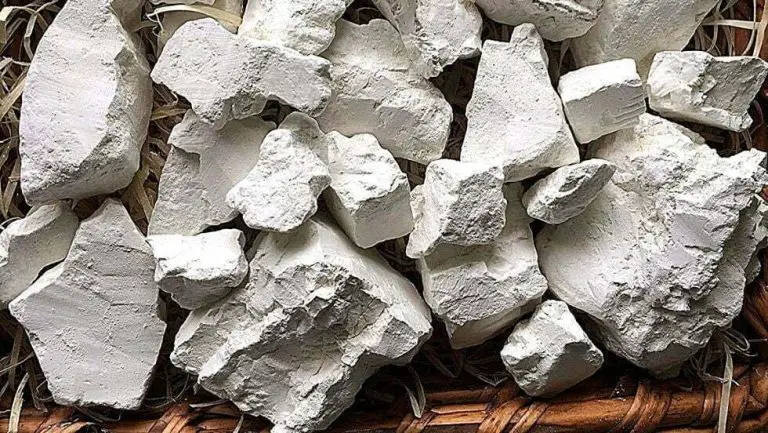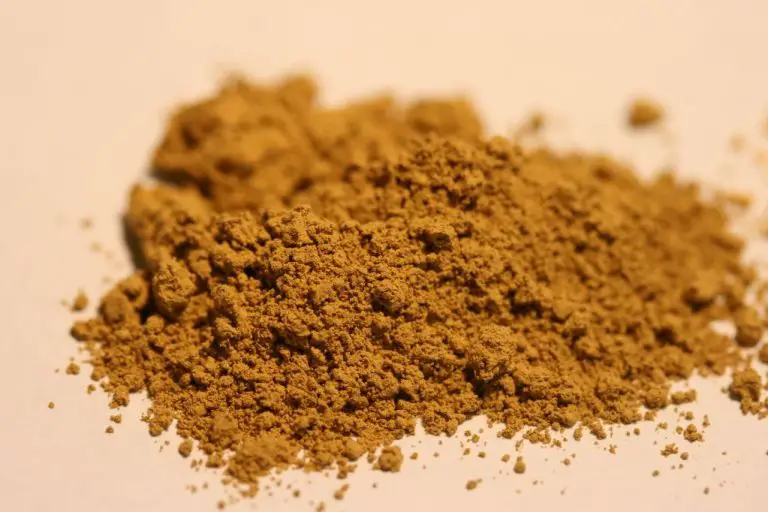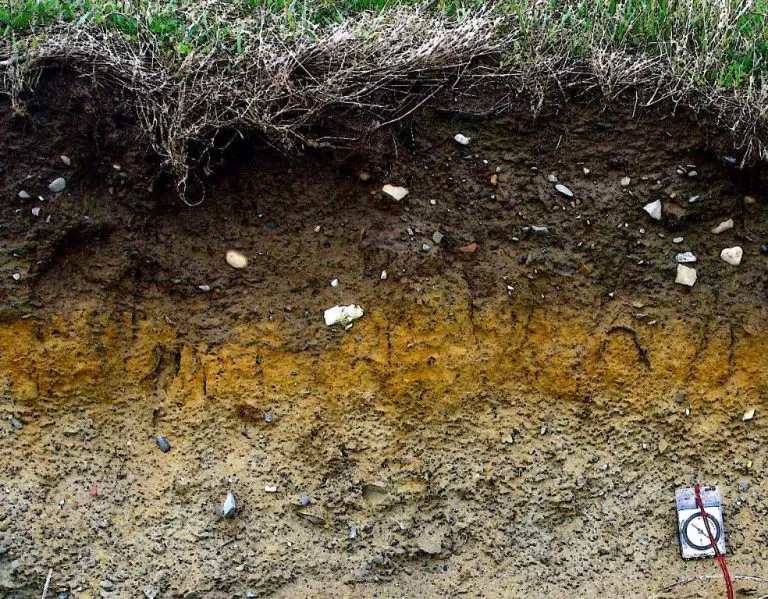How Long Does Mud Take To Turn To Clay?
What is Mud?
Mud is a thick, soft mixture of soil and water. It is a semi-liquid material that can flow slowly. Mud consists of various types of soils containing clay minerals and fine particles that are suspended in water. The water content can range from 15-50%, with higher water content resulting in a slurry-like consistency.
The primary components in mud are silt, clay, fine sand, and organic matter. Clay minerals give mud its sticky, moldable texture. The exact composition depends on the soil source and local environment where the mud originated. Mud often forms in wet, low-lying areas or anywhere the ground is saturated with water.
Common places where mud is found include marshes, swamps, riverbeds, lake bottoms, wetlands, and estuaries. Mud can also form temporarily when heavy rain or flooding saturates the topsoil. Buildup of organic material over time contributes to muddy conditions in some ecosystems.
What is Clay?
Clay is a fine-grained natural rock or soil material that is plastic when wet and hard when fired, made primarily of hydrated silicates of aluminum. The composition of clay includes silica, alumina, and water along with other minerals in lesser amounts. The properties of clay depend on the amount of water it contains. When wet, clay is moldable and can be shaped. When fired at high temperatures, the water evaporates and clay becomes permanently hard and rock-like. Due to its plasticity when wet and hardening when fired, clay is widely used for making pottery, bricks, tiles, and other objects.
The small particle size and plasticity of clay make it an excellent material for crafting and shaping objects. When wet, clay is sticky, pliable, and easy to mold into desired shapes. As clay dries, it hardens while retaining its shape. Firing clay at high temperatures chemically alters its mineral composition, making it very hard and durable while still maintaining the crafted shape.
Due to its abundance in nature and versatile properties, clay has served as an invaluable material throughout human history for crafting tools, art, buildings, cooking vessels and various other objects. The composition and characteristics of clay have made it an indispensable resource across numerous cultures and civilizations.
Difference Between Mud and Clay
The key differences between mud and clay are in their particle size, plasticity, and drying time.
Particle Size: Mud particles are larger than clay particles. Mud contains a mix of silt, sand, and clay, with particle sizes ranging from 0.01 mm to 0.25 mm. Clay particles are very fine, less than 0.002 mm in size.
Plasticity: Mud has low to moderate plasticity, meaning it can be molded but will often crack or crumble when shaped. Clay is highly plastic and can be molded into detailed shapes that hold their form without cracking when dried.
Drying Time: Mud dries relatively quickly, over hours or days. Clay has a much longer drying time, often weeks or months, due to the small size of its particles.
How Mud Becomes Clay
Mud transforms into clay through a gradual chemical weathering process. When mud is exposed to the atmosphere and weather, the particles that make up the mud begin to break down. Water, air, acids, salts, plants, animals, and changing temperatures slowly dissolve the mud particles into finer and finer grains. The most important chemical reaction is the loss of potassium, sodium, and calcium ions from the spaces between the particles. As these ions are leached away by water, the remaining particles can pack together more tightly. The mud becomes dense clay.
This weathering process physically and chemically alters the mud. The small, loose, varied particles that make up mud are broken down into uniform, flat clay particles. Mud is a loose mixture of silt, sand, clay, and organic matter. As the mud weathers chemically, the sand and silt components are dissolved away. Organic matter decays and is consumed by organisms. The remaining clay particles are stacked together in platy sheets. These chemical and physical changes transform the muddy mixture into smooth, cohesive, stiff clay.
Factors that Influence the Process
There are several key factors that influence how long it takes for mud to transform into clay:
Climate – Areas with wet, humid climates will transform mud into clay much faster than dry climates. The moisture helps break down organic materials in the mud through microbial and chemical processes.
Environmental Conditions – Mud in areas with acidic water and soils becomes clay more readily than mud in alkaline conditions. Acidity promotes chemical weathering of the mud particles into clay minerals.
Type of Mud – The original composition of the mud impacts the speed of clay formation. Mud that contains a lot of silt and organic material takes longer to form clay than mud that already has a high clay mineral content.
Estimated Timeline
The amount of time it takes for mud to transform into clay can vary greatly depending on environmental conditions. Generally speaking, the process ranges from several weeks to multiple years.
In wet, humid climates where there is abundant rainfall, the transformation tends to occur relatively quickly. The constant moisture accelerates the chemical and physical changes that turn mud into clay. In these conditions, the process may only take weeks or months.
In dry areas that receive little precipitation, the transition from mud to clay happens much more slowly. Without consistent moisture, the chemical reactions cannot progress as rapidly. In arid environments, the process can take many months or even several years for mud deposits to fully convert into clay.
The actual timeline depends on factors like the clay mineral content in the original mud, the climate and weather patterns, and the depth/location of the mud deposit. But under average conditions, a rough estimate is that complete clay formation takes 1-5 years from start to finish.
Testing If Mud Has Become Clay
There are a few simple tests you can perform to determine if mud has transformed into clay:
Plasticity Test
One way is to do a plasticity test. Take a small amount of the mud and roll it into a ball. If you can roll it into a long “snake” shape without it breaking apart, it likely has developed plasticity and become clay. The more flexible and moldable it is, the higher the clay content.
Shrinkage Test
You can also do a shrinkage test. Form a ball of mud, measure its diameter, and allow it to air dry completely. If it shrinks and cracks as it dries, this indicates clay is present. The more it shrinks, the higher the clay composition.
Drying Time
Check how long it takes the mud to fully air dry. Pure mud will dry within hours while clay can take 12-24 hours to fully dry. The longer the drying time, the more clay is present.
If the mud exhibits plasticity, shrinkage, and slow drying, it has likely transformed into clay over time.
Importance of Mud Transforming Into Clay
The transformation of mud into clay has been an important process for human civilization. Clay deposits formed from the weathering of rocks over long periods of time have been a vital natural resource utilized by humankind for thousands of years.
Clay has been especially significant for the production of pottery and ceramics. From ancient times to the present day, clay has been shaped and fired to create vessels, tiles, bricks, and artwork. The unique properties that emerge after firing have made clay an ideal material for crafting durable and decorative objects.
Clay used for pottery is often secondary clay, meaning it was deposited in lakes, estuaries, or marine basins after the weathering process occurred, before being accumulated and decomposed. These secondary clay deposits result from the transformation of mud to clay and provide high quality clay for human use.
In addition to pottery, clay that comes from the decomposition of mudstones, shales, and other mud-derived rocks has also served as an important building material. Bricks, mortar, cement, and ceramics all utilize clay that originally formed from decomposed mud. The fired clay provides strong and weather-resistant building materials to construct houses, buildings, roads, and infrastructure.
As mud transforms into clay, it creates an abundant, renewable, and readily available natural resource that has been indispensable for human creativity and construction innovations throughout history and prehistory. The transformation process is essential for providing the unique mineralogy and plasticity that makes clay so useful for pottery and building materials.
Preventing Unwanted Clay Formation
There are several methods to prevent mud from turning into clay if clay formation is undesirable:
Improve Drainage
Excess moisture is one of the key factors that turns mud into clay. Installing drainage systems or digging drainage ditches can help excess water drain away from the mud and prevent oversaturation.
Reduce Moisture
Limiting water exposure by using covers, barriers, or redirection during wet seasons can help keep moisture levels lower.
Stabilizing Agents
Adding stabilizing agents like gravel, lime, or cement mixes to the mud can physically bind particles together and prevent clay formation. However, stabilizers may impact soil quality.
Summary
Mud is composed of silt and clay particles mixed with water. Over time, as the water evaporates, the silt and clay particles bind together to form clay. This process can take anywhere from a few months to hundreds of years depending on factors like climate, the composition of the mud, and environmental conditions.
In most cases, untreated mud will take approximately 1-5 years to fully transform into clay. Mud in hot, arid environments may only take a few months, while mud in cool, damp climates could take decades. The higher the ratio of clay particles in the original mud composition, the faster the process will occur.
The key factors that determine the mud to clay transformation rate are:
- Climate – arid vs humid
- Clay particle ratio in original mud composition
- Environmental conditions – exposed to air and sun vs protected
- Presence of organic matter or other additives
As the water evaporates from mud over time, the clay particles move closer together until the mud fully transforms into clay. Understanding this process allows predicting and controlling the rate of clay formation from mud.




